Early in the 20th century settlers on the islands of Chañaral and Choros off northern Chile had a brainstorm: They’d create a ready supply of fresh meat by unleashing European rabbits.
It worked out as well as rabbit introduction in Australia.
In short order the aliens stripped away a rich array of native plants (many imperiled), reducing the islands to eroding dirt and rubble. They took over the nesting burrows of Humboldt penguins and Peruvian diving-petrels, now listed by the International Union for Conservation of Nature as vulnerable and endangered respectively. And they knocked down populations of the Atacama tree iguana, many-spotted tree iguana, braided tree iguana, Chilean slender snake, a spider found only on Chañaral and countless insect species including a beetle found only on Choros.
About half a century later settlers had another brainstorm: To cure Chañaral’s biblical plague of rabbits they’d introduce foxes. But the rabbits found sanctuary underground; and the foxes dined on petrels instead, wiping out a nesting population that had once numbered around 200,000. This deprived native burrowing owls of their most important natural diet. It also eliminated the foxes.
Finally, in 2013, people who knew what they were doing worked out a real solution. Island Conservation, a nonprofit team of biologists dedicated to preventing extinctions around the globe, partnered with the Chilean National Forestry Corporation. And, with support from Wisconsin-based pesticide manufacturer Bell Laboratories, Inc. and other U.S.-based funders, they eradicated rabbits on Choros in one year. Chañaral, bigger and with more complex terrain, was certified rabbit free late in 2017.
As on so many other islands success was made possible by the anticoagulant poison brodifacoum, sufficiently fast acting to kill rodents and rabbits before they learn to avoid it. The bait formulation, developed and produced by Bell Labs largely at its own expense, was the same one used in the recent salvation of Desecheo National Wildlife Refuge off Puerto Rico. This time, though, crews were able to deliver bait by hand instead of helicopter because rabbits move around more than rodents.
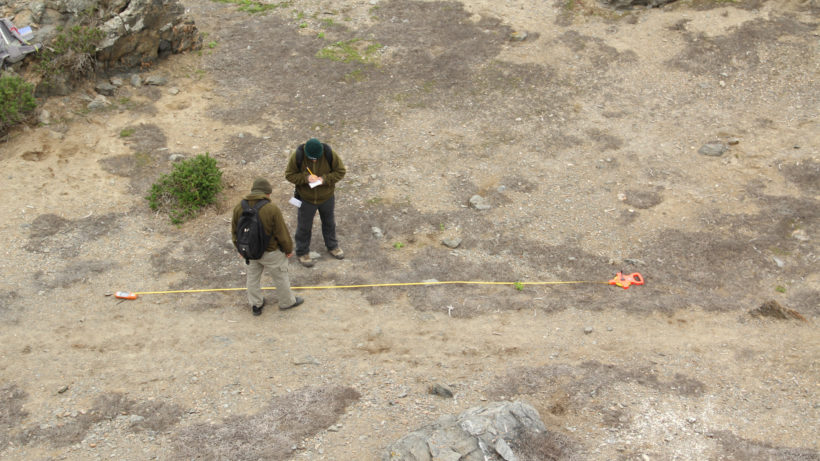
All it takes is one part brodifacoum per 40,000 parts bait. But fear and loathing of all poisons in all situations is a global phobia. Always the objections are these, and I’m quoting directly from hard copy and online commentary: “Poison is cruel.” “There has to be a better way.” “The nonnatives didn’t ask to be put there.” “Nontarget wildlife will die.” “Who are humans to call other species invasive?” “Don’t play God by killing one species in favor another.”
“Cruelty” by poisoning aliens doesn’t approach cruelty to natives by not poisoning aliens. There is no “better way,” in fact, no other way. “God” was played by people who made the mistakes of alien introductions, not by people correcting those mistakes. No recovery project ever “killed a species,” only individuals of abundant species in order to prevent extinction of entire species.
Constant practice has rendered Island Conservation adept at outreach. One advantage it had on Choros and Chañaral was that in 1990 Chile had designated these islands — along with a third, Damas — as the Humboldt Penguin National Reserve. Settlers left, and the islands became important for ecotourism, mostly for the rich marine life surrounding them. Today the 2,123-acre reserve sustains 80 percent of the planet’s remaining Humboldt penguins.

“What really changed public attitudes,” explains Island Conservation’s Director of Conservation, Dr. Erin Hagen, “was our before and after photos along with [partner-sponsored] tours of Choros after eradication. There was amazing plant recovery. Barren fields and rocks now teem with herbaceous plants. Diving petrels are expanding; we’re seeing more and more burrows and more occupied nests. The increase in penguins is slower but steady. Some of the more vocal opponents actually wound up helping us monitor rabbit removal.”
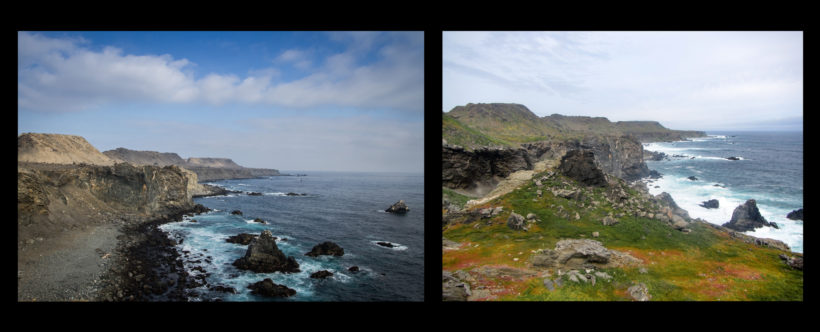
“In the course of a year the seed bed that was there took off, and the island just lit up like a Christmas tree,” adds Island Conservation’s Project Leader, Maddy Pott.
By 2016, when rabbit eradication got under way on Chañaral, opposition consisted entirely of a single Facebook condemnation of brodifacoum. The poster was immediately shouted down by project supporters.
Now life on the islands themselves, as well as in the surrounding sea, is drawing tourists.

“What we hear again and again is how fast and how amazing recovery is,” declares Bell Labs’ Craig Riekena. “Our company has been involved in about 75 island projects around the world, often with The Nature Conservancy. “I wish sonograms had been taken before and after some of these projects so people could first hear the dead silence [of alien-infested islands] and then the plethora of bird song and other wildlife sounds after recovery. It would really strike home.”
Karen Andrew of the New Zealand Department of Conservation doesn’t wear her emotions on her sleeve, inured as she is to the grim realities of nature. Before her time in Chile she’d worked on rabbit eradication on Australia’s 32,124-acre Macquarie Island in the Southern Ocean, an enormous undertaking that, along with cat, rat and mouse eradication, has recovered or stabilized eight sea-bird species rangewide and significantly benefitted six others. Andrew left Macquarie early in 2014 when it was a mess of bare dirt and landslides. When she returned in January 2018 and saw the “phenomenal growth of lush, new vegetation” she wept.
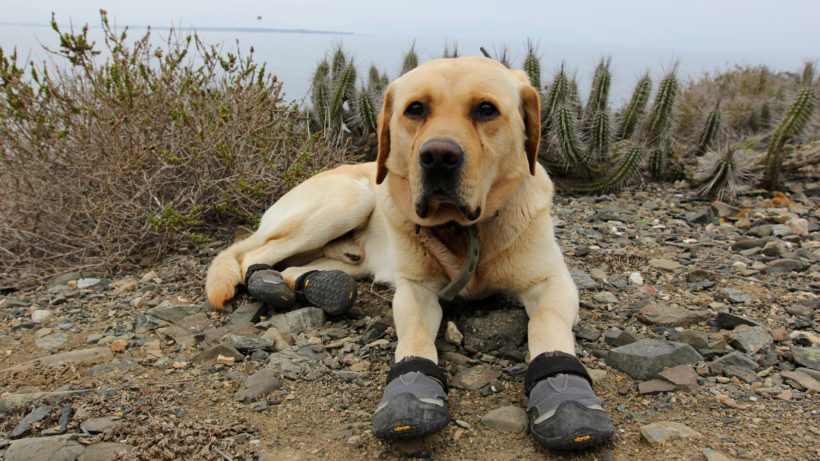
Certifying islands rabbit free is demanding work, and it would have been virtually impossible without Finn, a dedicated and enthusiastic Island Conservation researcher who had been incarcerated and placed on death row. Finn is a yellow Labrador retriever rescued at the 11th hour from a New Zealand pound and trained to sniff out rabbits. Finn’s reward for finding them is pats and play time, which includes fetching a tennis ball wrapped in rabbit skin.
“He’s got big eyes filled with devotion and a tail that doesn’t seem to stop wagging,” reports Andrew who deployed him on Macquarie and Choros. “Because of the rough terrain on Choros and Chañaral he had to wear rubber booties. I gave him some training before we went to Chile so he could get used to them. He was very distracted by them at first; it was quite comical.”
One thing island-recovery critics have right is that nontarget bykill is nearly inevitable. On Choros and Chañaral a few turkey vultures, black vultures and passerines succumbed. But what the critics don’t comprehend is that, in ecological and species-level contexts, this bykill has zero significance.
For each new project the partners prepare in-depth, EIS-style risk assessments with accurate bykill projections. And, while any bykill is regrettable, over the years it has steadily diminished.
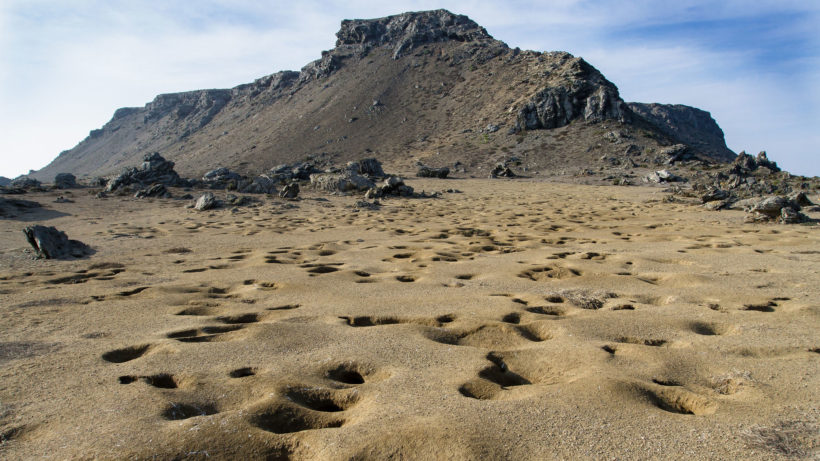
Bell Labs limits bykill by making short-lived baits. “The ideal pellet will last a week or two, then break down,” says Riekena. “When Gregg Howald [Island Conservation’s Global Affairs Director] first came to us 18 years ago for help with the Anacapa project we bought new equipment to make larger pellets that can survive being dropped from helicopters. Then we designed wet and dry versions, wet being a bit more stable. We used the dry form on Desecheo, Choros and Chañaral because they’re desert islands. We love doing this stuff. We win the Wisconsin Friend of the Environment Award pretty much every time we enter, and we’re a pesticide company!”
Recovery of Chañaral is just beginning, but already the island is adorned with spectacular regrowth of native cacti, herbs and shrubs, including threatened species. “The vegetation is healthy and vigorous,” says Hagen. “Remarkable foliage, big juicy leaves that you never saw before. Flowers all over the place.”
The recovery of Choros and Chañaral is far from the end of the partners’ work, not even the beginning of the end, but as Churchill said of another kind of war, “perhaps the end of the beginning.” Chile has 5,000 islands, many of which desperately require ecological restoration.
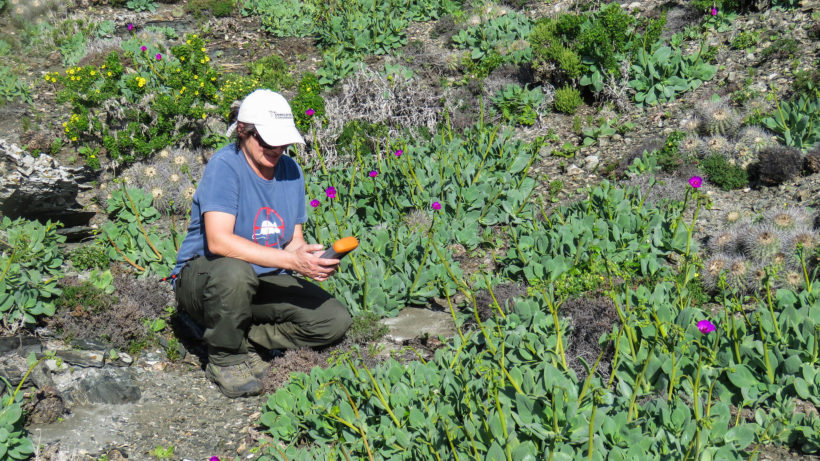
Island hopping will now progress to Chile’s Juan Fernández Archipelago. First stop: 11,614-acre Robinson Crusoe Island where castaway Alexander Selkirk, inspiration for Daniel Defoe’s novel, waited four years to be rescued. Hagen was already on site when I interviewed her by phone. The challenges here dwarf the daunting ones overcome on Choros and Chañaral. The island, more than five times the size of the entire Humboldt Penguin National Reserve and with a human population of about 1,000, is an alien hell of bramble, rabbits, coatis, house mice, black rats, Norway rats, cattle, horses and feral goats and cats.
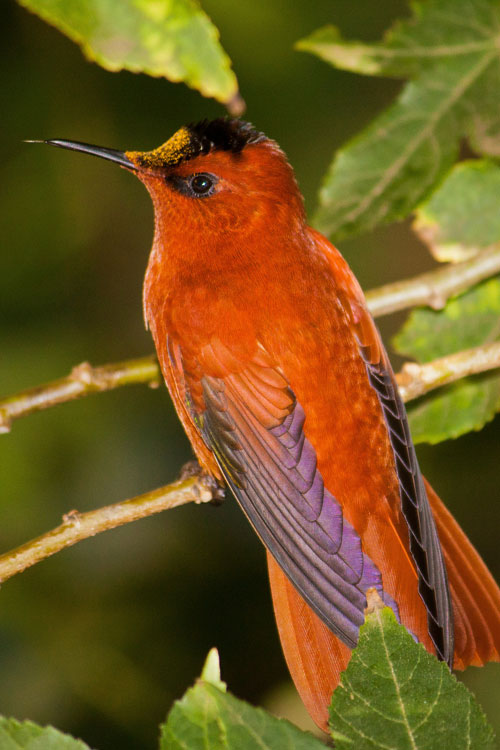
One of the more stunning Robinson Crusoe natives is the critically endangered Juan Fernández firecrown, the world’s only oceanic hummingbird and found nowhere else. To conserve energy in its cold, montane forest it uses its large feet to hang from flowers instead of hovering like other hummingbirds, making it vulnerable to mammalian predators it didn’t evolve with. So extreme is the sexual dimorphism that early naturalists thought the male (fiery rufous-orange with an iridescent reddish-yellow crown) and the female (metallic green with a white belly and bluish-green crown) were different species.
“I get mushy when I talk about these birds because I did my graduate work on them,” says Hagen. “They’re really important pollinators. They capture the hearts of everyone who sees them. They have an amazing, trilling vocalization, and they’re so curious they come right up to people. They visit gardens where locals have planted native flowers. It’s important for people to see firecrowns, but because of all the cats it’s very dangerous for them to come down into town. Unfortunately, they don’t have a choice because invasives have so impoverished their native forest.”
Despite all the work ahead, the partners are upbeat. “What we’re really excited about,” says Hagen, “is that with all the support generated by our successes on Choros and Chañaral we can now leverage more island recovery in Chile.”
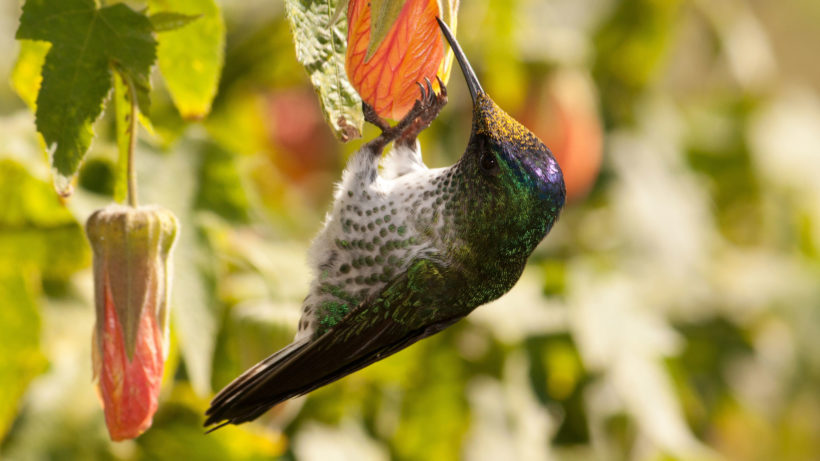
Lea una traducción al español de este artículo sobre Island Conservation.
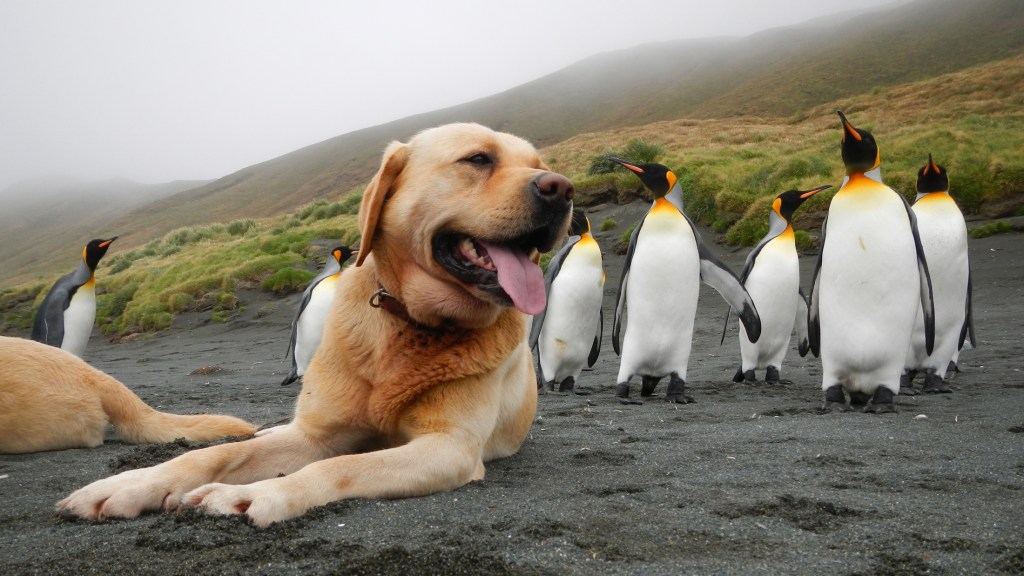



Fascinating and encouraging article on eradicating exotic mammals. Jumping to another island, Maui, any similar progress in eliminating feral hogs?
Thank you for the frankness of the article. We often read about successes without knowing the facts . I’m heartened to know that a company that deals in pesticides have a positive side instead of viewing them as irresponsible and anti-environment. My eyes are constantly opened to the depth and breath of the work you do and thank God for organizations like yours.
Only wish I was wealthy and able to fund more of what you’re doing with those islands. Godspeed.
What an inspirational article! Thank you ..and Finn too!
It might be a good idea to poison the rabbits and rats on Robinson Crusoe Island, but if they want to rid the island of the cattle, horses, goats and cats, a humane way of transporting them elsewhere should be found.
I’m still not on board with pesticides or murder of the innocent not asking to be put there. I see the beauty on that island, yes; I understand that a group of very ignorant people caused the demise of these innocent rabbits, yes; I cannot support pesticide use because of their stupidity, no; and I believe there was a better way to solve these problems. I am sorry for my non supportive opinion. I’m not certain I can donate to your organization any longer:(
My sentiments exactly!
Tammy, your “better way” would be…what exactly? Please offer specifics. Belief alone is not going to stop rabbits, rats, and mice from destroying the island habitats that native seabirds need to breed and survive. Penguins, petrels, albatrosses and murrelets have no where else to go. If the rats, rabbits and mice stay on these islands, entire seabird species will die out, forever. There is not an option where no animals are harmed. I am not willing to let extinction happen if a realistic, viable option exists to do something about it. I would like a world for my children and grandchildren that contains more than just rabbits, rats, and mice. I support these and other efforts of Island Conservation.
Love the success but do wonder where it is healthy for rabbits, I guess where they have natural predators, love their furry selves too
very impressive. I had no idea; saw evidence of widespread poisoning in New Zealand on a tour, but no real follow-up information
david smith
I sadly applaud the partnership of the (responsible!) pesticide and conservation folks. The introduction of ferral domestic european animals into wildlands has had horrible consequences. Bunnies are designed to be a rapidly reproduced and preyed-upon species–mother nature’s fast food. I am a card carrying member of the American House Rabbit Society and have two pet spayed rescued bunnies loose with hay/litter boxes in my apartment. I love them dearly but i know the piles of hay and greens they devour and you needn’t remind me of how efficiently they chew. The introduced virus myxomiotosis works cruelly and lengthely, besides in the end being useless to eradicating wild populations and posing a continuing viral threat to pets. These projects were well thought out, well targeted, and resulted in success.
To reclaim what was lost due to lack of forethought is amazing. Wonderful work. Many thanks.